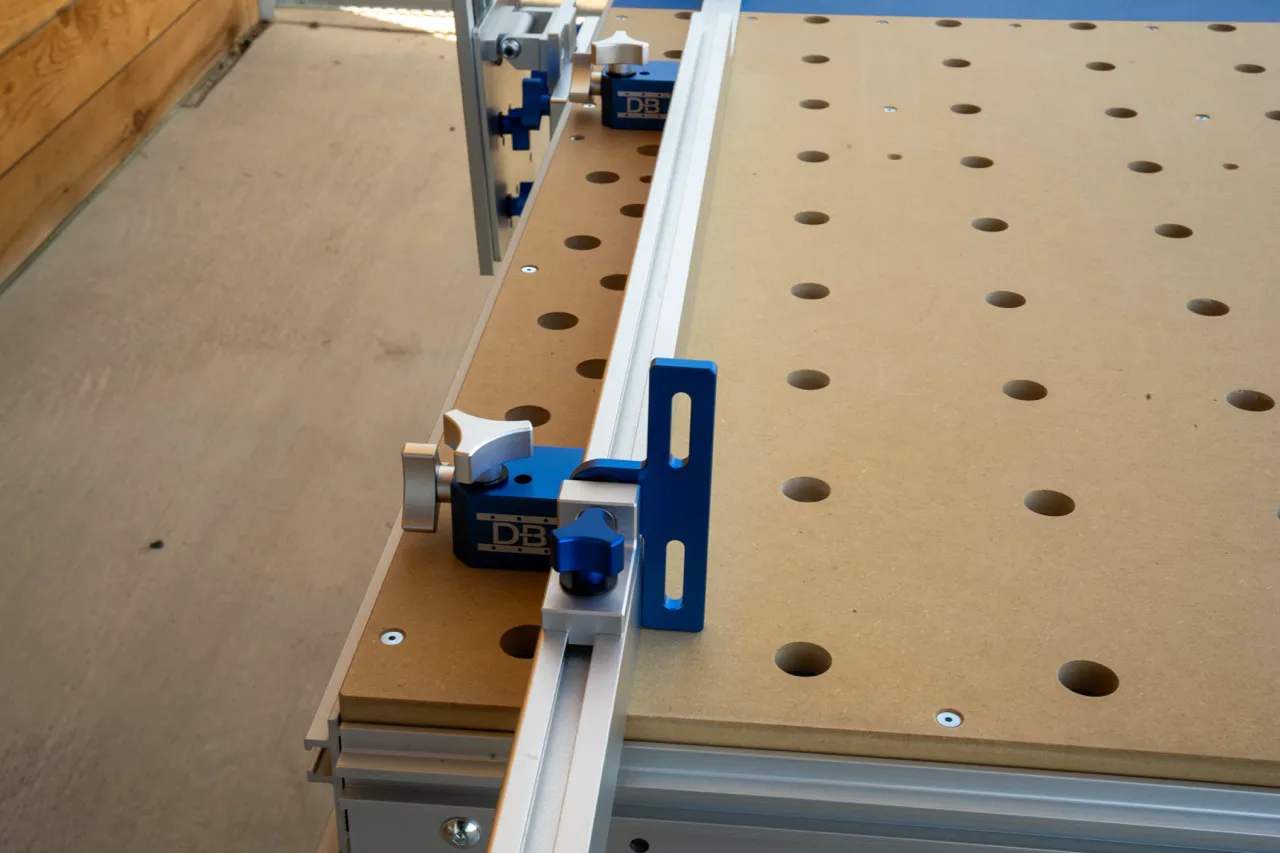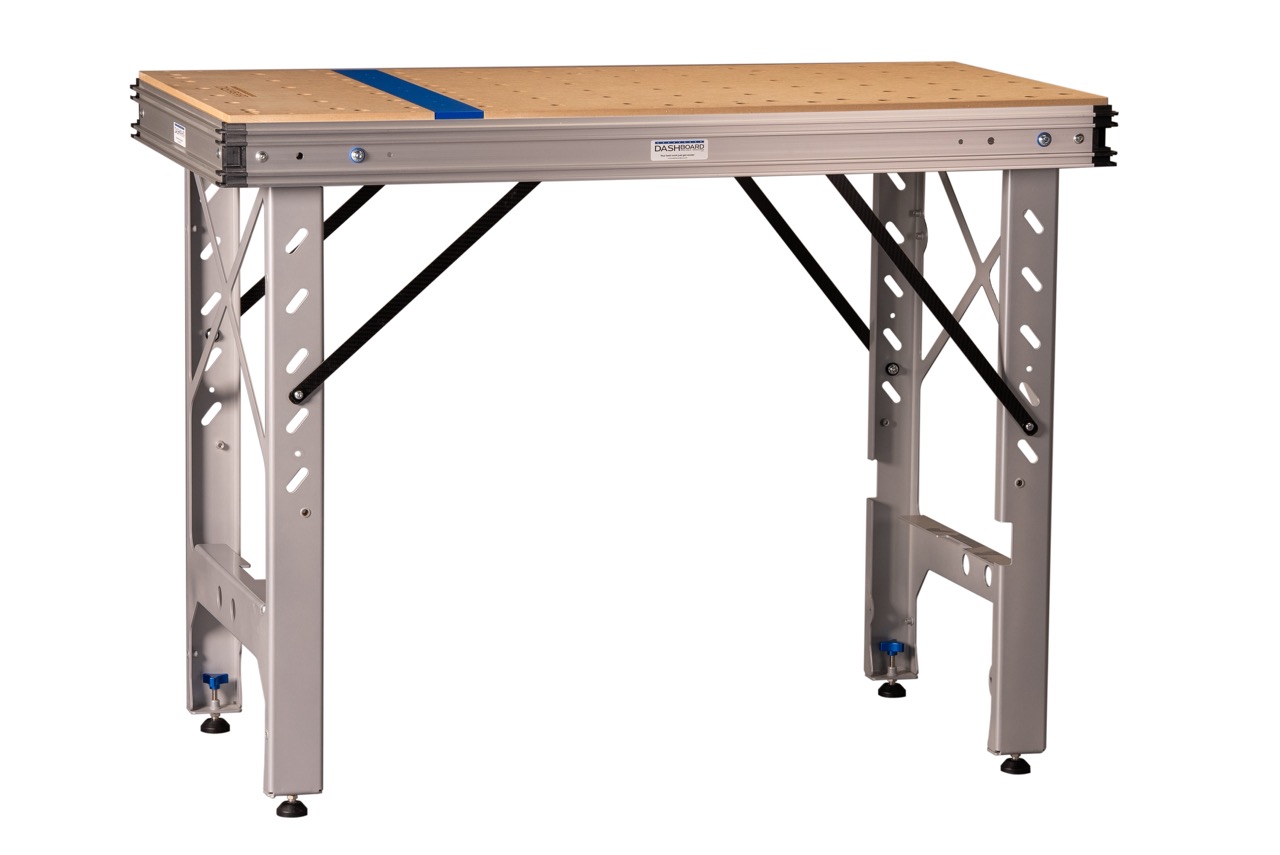TLDR Summary
The Problem: Achieving perfect 90-degree cuts is critical for woodworking projects, but traditional methods often result in gaps, wasted material, and frustration.
The Solution: Portable workbench systems (like the Dash-Board) combined with track saws deliver ±0.1-degree precision, 10x more accurate than freehand cutting and 5x better than most table saws.
Key Technical Points:
- Workbench stability + track saw rail = mechanical constraint that eliminates human error
- Proper setup (leveling, guide rail square, adjusted guide blocks) is crucial
- 2-piece MDF tops with replaceable cut strips maintain reference surface integrity
Best For: Cabinet makers, contractors, small shops, anyone prioritizing precision over production speed in limited space.
Bottom Line: This system transforms "close enough" cuts into repeatable perfection by combining engineered stability with mechanical precision—no more crossed fingers or wasted materials.
__________________________
You're about to cut an expensive sheet of Baltic birch plywood, and that 90-degree angle needs to be perfect.
One degree off means gaps in your cabinet joints, wasted material, and hours of frustration.
The solution isn't a massive table saw setup; it's understanding how portable workbench systems paired with track saws deliver dead-accurate perpendicular cuts every time, even in a cramped garage or on a job site.
The Physics Behind Perfect 90-Degree Cuts
Every precise cut starts with three fundamental requirements: a stable reference surface, consistent blade alignment, and vibration control. Traditional table saws achieve this through mass, hundreds of pounds of cast iron. But modern portable workbench systems like the Dash-Board use engineered stability instead.
Here's what actually happens during a cut: your saw blade needs to maintain exact perpendicularity while traveling 48 inches or more. Even 0.5 degrees of deviation creates a 0.42-inch gap over a 4-foot cut, enough to ruin any project.
The workbench provides the stable plane, while the track saw's guide rail ensures consistent travel.
Track Saw Mechanics: Beyond the Marketing
Track saws aren't just circular saws with rails. The plunge mechanism keeps the blade perfectly vertical throughout its travel, while the rail's aluminum extrusion maintains straightness to within 0.005 inches per foot.
When you combine this with a workbench that offers 300 pounds of static load capacity, you eliminate the micro-vibrations that cause blade wander.
The critical difference lies in the interface. Unlike freehand cutting, where human error compounds over distance, the track-to-saw connection creates a mechanical constraint. Adjusting the guide blocks on your track saw to eliminate play—even 0.001 inches—transforms accuracy.
Most users never make this adjustment, leaving performance on the table.
Setting Up Your Portable Workbench for Precision
Start with workbench placement.
Level doesn't mean "pretty close", use a 4-foot level and adjust the leg levelers until you achieve less than 1/8-inch deviation across the entire surface. The Dash-Board's carbon fiber leg braces maintain this calibration even when moving between locations.
For the track alignment, here's the overlooked technique: instead of aligning to pencil marks, use a guide rail square clamped at your cut line. This mechanical reference eliminates parallax error from visual alignment. Position your track's edge against the square, and you've guaranteed 90 degrees before the saw even powers on.
The 2-piece MDF top with replaceable cut strips serves a dual purpose, it prevents tear-out on the bottom face while maintaining a pristine reference surface. After 50-100 cuts, flip the strip. After another cycle, replace it for $39 instead of buying a new workbench top.
Accuracy You Can Measure
Testing with a certified machinist square reveals the true capability of this system:
- Standard circular saw freehand: ±2-3 degrees deviation over 48 inches
- Table saw with premium blade: ±0.5 degrees (requires perfect fence alignment)
- Track saw on stable surface: ±0.25 degrees
- Track saw with portable workbench system and guide square: ±0.1 degrees
That 0.1-degree precision translates to less than 1/32-inch deviation over a full sheet—tighter than most glue joints.
When Portable Outperforms Stationary

The portable advantage becomes clear in three scenarios:
Site Work: Carrying 4x8 sheets to a table saw means wrestling 60+ pounds of material. With a portable system, you bring the tool to the material. Set up takes 60 seconds versus 10 minutes of material handling.
Small Shops: A table saw requires 100+ square feet of clearance for full sheets. The portable workbench needs just the material footprint plus 24 inches on one side for the operator.
Precision Demands: Table saw fences can shift 1-2mm between cuts from vibration and material pressure. The track saw's rail locks in position, maintaining calibration across entire projects.
System Capabilities
Once you master 90-degree cuts, the same system handles:
- Compound miters using angle guides
- Tapered cuts with offset parallel guides
- Repeated dados using depth stops
- Edge jointing with router attachments
The modular nature means adding capabilities costs $50-200 per accessory rather than buying dedicated machines.
Is This System Right for You?
The portable workbench and track saw combination excels for:
- Cabinet makers processing 10+ sheets weekly
- Contractors needing job site precision
- Small shop owners maximizing space
- Woodworkers prioritizing accuracy over speed
It's not ideal for:
- Production environments cutting 50+ sheets daily
- Primarily working with solid lumber under 6 inches wide
- Those with dedicated shop space exceeding 400 square feet
The transformation from "close enough" to "perfect every time" happens when you understand that precision comes from system integration, not individual tool quality.
Your next project deserves better than crossed fingers and test cuts.
With proper setup and technique, achieving perfect 90-degree cuts becomes as reliable as measuring twice and cutting once, except now you'll only need to measure once.
FAQs on Achieving Perfect 90-Degree Cuts
Can I really achieve table saw-level accuracy with a portable system?
Yes. Measured testing shows: portable workbench + track saw = ±0.1-degree deviation over 48 inches. Cabinet table saw = ±0.5 degrees. The track saw wins because the rail physically constrains the blade path, eliminating fence deflection issues.
What's the minimum space needed for this setup?
72 square feet (6x12 feet) to cut a full 4x8 sheet. Table saw needs 150+ square feet minimum for the same task due to infeed/outfeed requirements.
How often do I need to replace the cut strips?
Every 100-200 cuts. Flip once at 50-100 cuts, then replace. Cost: $39 per strip. A new MDF workbench top costs $150-200, so strips save $110-160 per replacement cycle.
Is this system worth it for a hobbyist who cuts maybe 5 sheets per month?
At 5 sheets/month with 10% waste reduction, you save $37.50 monthly on materials (assuming $75/sheet). The system pays for itself in 61 months through material savings alone, faster if you factor in space costs.
Can this replace all the functions of a table saw?
It replaces sheet goods processing (80% of cabinet work) and crosscuts up to 48 inches. It cannot match a table saw's 30-second repeat cuts for dimensional lumber or dado stack capabilities.









.jpeg)
.webp)
